全站搜索
Search the entire website
Search the entire website
Copper is mainly used in manufacturing of electrical equipment, construction such as roofing and plumbing as well as industrial materials such as thermal converter and alloys. For copper ore beneficiation, there are multiple stages including crushing, grinding, classification and separation. Firstly, by crushers, raw copper ores can be crushed into little particles. Next, those particles would be sent into grinding mills to be ground into fine powders. Finally, through specific beneficiation methods such as gravity separation and flotation, copper concentrates can be got.
ZONEDING MACHINE specializes in building machinery for processing minerals. ZONEDING manufactures equipment for crushing different rocks, like copper ore.
Copper ore processing is very important. It is not just about breaking the rock. It is about getting the copper minerals out. This is called beneficiation. Flotation is a main way to clean copper ore after crushing and grinding.
How copper ore is crushed affects how well the flotation works. It changes how much copper can be obtained. ZONEDING provides solutions for crushing copper ore the right way. This helps the flotation process work better. This helps customers get more copper and make more money.
Here are very common copper ore crushing plants for reference. They have been proven by practice. And they have the advantages as follows:
Copper ore is different depending on where it comes from. It has copper minerals inside. It also has waste rock around the copper minerals. This waste rock is called gangue or barren rock. The copper minerals can be soft or hard. The waste rock can be hard or soft. It can also be abrasive. Abrasive rock rubs away the metal parts in your machines. This makes crushing copper ore different for each mine. Your specific ore’s “personality” changes how it breaks. It changes how much it wears out your crushing machines.
Some copper ore is hard like granite. Some is softer. Some types are very abrasive. Abrasive ore rubs away the metal in crushers and screens very fast. This mixture of minerals puts special stress on crushing machines. You need strong machines. You need parts that can handle the rubbing and the impact. Copper ore can also be sticky or wet. This happens if it has clay in it or comes from a wet mine. Sticky ore can cause problems with material flow. It can block machines. This stops your production. You need equipment that can handle these different conditions. You need a built for your ore’s specific character.
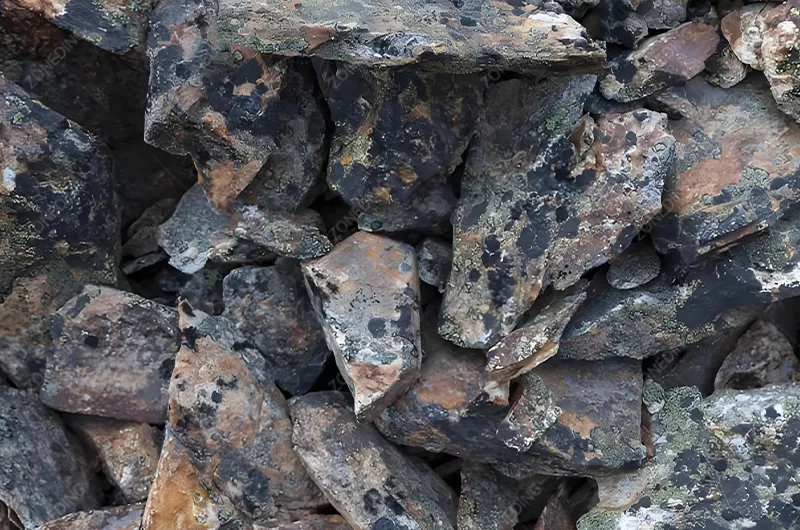
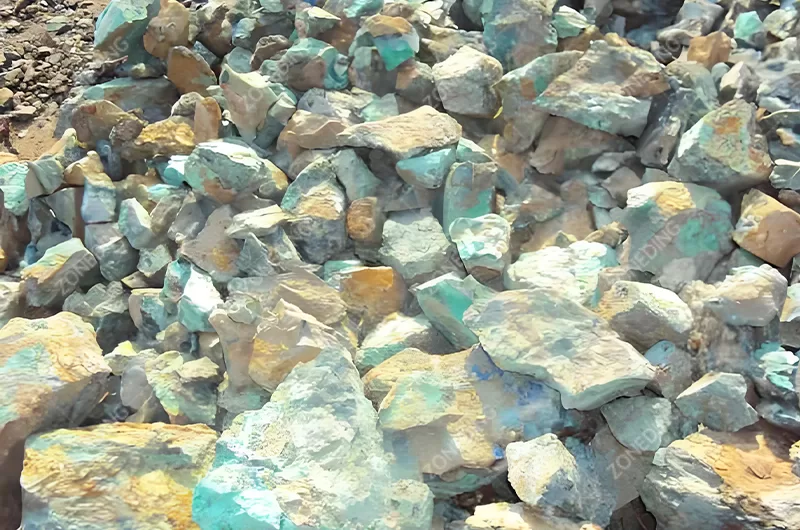
Crushing copper ore is not like making gravel. You break copper ore to free the copper minerals. This is called liberation. You must break the rock until the valuable copper pieces are separate from the waste rock pieces. The size you need to crush depends on your specific ore. It depends on how the copper minerals are connected to the waste rock.
If you do not crush small enough, the copper is still stuck to the waste rock. Then your cleaning machines, like Flotation Machines, cannot get all the copper out. You lose copper. This means you lose money. If you crush too much, you make too much fine dust. This fine dust is hard to handle in the flotation process. It can make the water dirty. It can lower how much copper you get. Some copper can get lost with the fine waste. So, the goal is to crush just enough. You need to liberate the copper minerals. You need to make the right size range for the grinding machines that come after crushing. The minerals in your ore tell you how fine you need to crush to get good liberation.
You need strong machines for crushing copper ore. The machines must break the hard parts. They must handle the abrasive parts. They must also deal with sticky ore if your ore is like that. For the first step, taking big rocks from the mine, you need a primary crusher. A Jaw Crusher is often the standard choice. It is very strong. It squeezes big rocks with powerful plates. It takes large lumps of copper ore. It breaks them into smaller pieces.
After the Jaw Crusher, you need to break the rock even smaller. Cone Crushers are widely used for the second and third crushing stages. They squeeze rock between a moving cone and a bowl liner. This works well for hard and abrasive materials. Cone Crushers also help control the final size of the rock. This is important for preparing the ore for grinding and flotation. Sometimes, if the ore needs to be crushed to a specific fine size before grinding, other crushers might be used. But the Jaw Crusher and Cone Crusher combination is very common and effective for most copper ore types. This combination breaks the ore in stages. This uses energy better. It helps you control the final size.
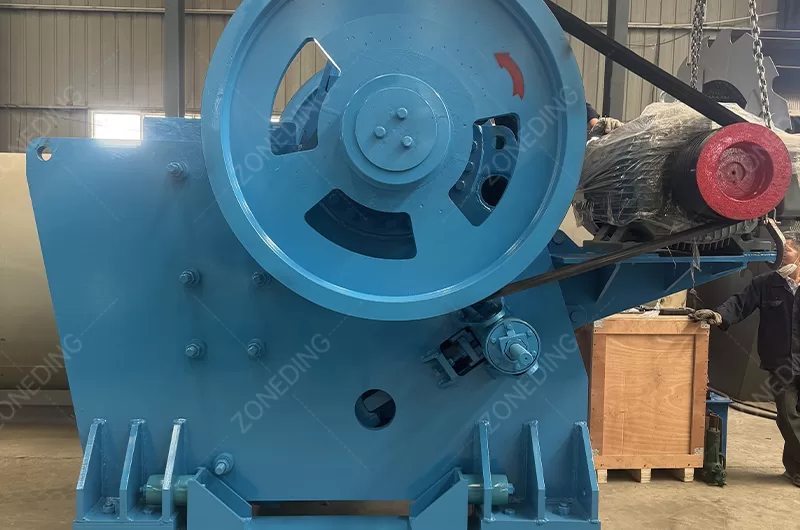
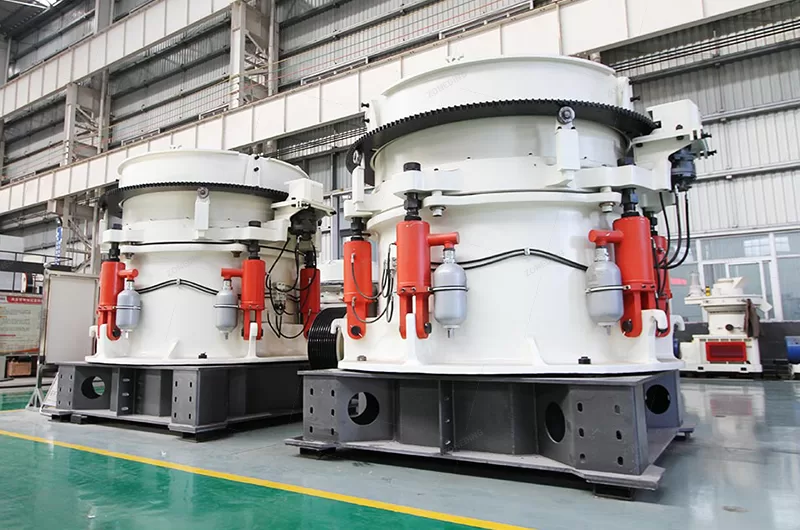
The best combination of crushers depends on your copper ore. It depends on how hard and abrasive it is. It depends on the size you need for the next step (grinding).
A typical setup is a primary Jaw Crusher. It takes big run-of-mine ore. It breaks it down to a manageable size. Then, you use one or two Cone Crushers. These are for secondary and sometimes tertiary crushing. They break the rock smaller and smaller. Screens (Vibrating Screen) are very important in this process. Screens separate the rock pieces by size. This stops pieces that are already small enough from going into the next crusher. This saves energy. It reduces wear on the crushers. It also helps make sure the final product has the right size range for grinding. Using the right series of crushers and screens in a closed circuit is key. It makes the crushing plant work efficiently. It prepares the ore well for the grinding mills (Ball Mill) that feed the Flotation Machines.
| Crusher Stage | Common Crusher Type | What it Does for Copper Ore |
|---|---|---|
| Primary | Jaw Crusher | Breaks large ore lumps from mine |
| Secondary | Cone Crusher | Breaks down jaw crusher product |
| Tertiary | Cone Crusher | Further breaks down for grinding prep |
| Screening | Vibrating Screen | Classifies material size between stages |
Yes, high wear is common in crushing copper ore. The abrasive minerals in the ore rub away the metal parts inside the machines. These parts are called wear parts. Examples are jaw plates in a Jaw Crusher, cone liners in a Cone Crusher, and screen media in a Vibrating Screen. When these parts wear out fast, you must stop the plant. You change the worn parts. This costs money for new parts. It also costs money because you are not producing copper ore while stopped. You need clever ways to make wear parts last longer. This saves you a lot of money over time.
The main “secret weapon” is choosing the right material for your wear parts. For hard and abrasive copper ore, wear parts should be made from special steel alloys. High manganese steel is common. Chrome alloys are also used. The best material depends on exactly how abrasive your ore is. A good supplier will study your ore. Then they will recommend the best wear part material for your case. How you feed the crusher also matters. Sending a steady, controlled flow of rock into the crusher helps the wear parts wear more evenly. Overloading the crusher or feeding it unevenly can make parts wear faster in certain spots. Setting up the crusher correctly also helps. Running the machine the way it is designed helps the wear parts last longer.
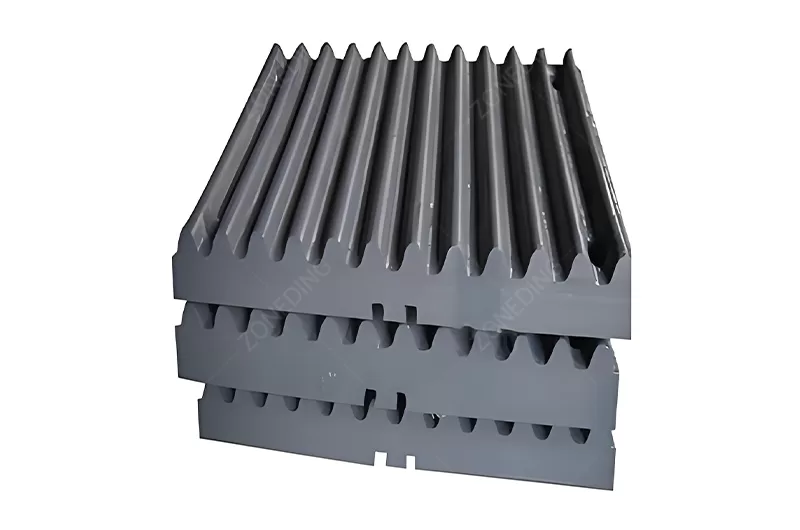
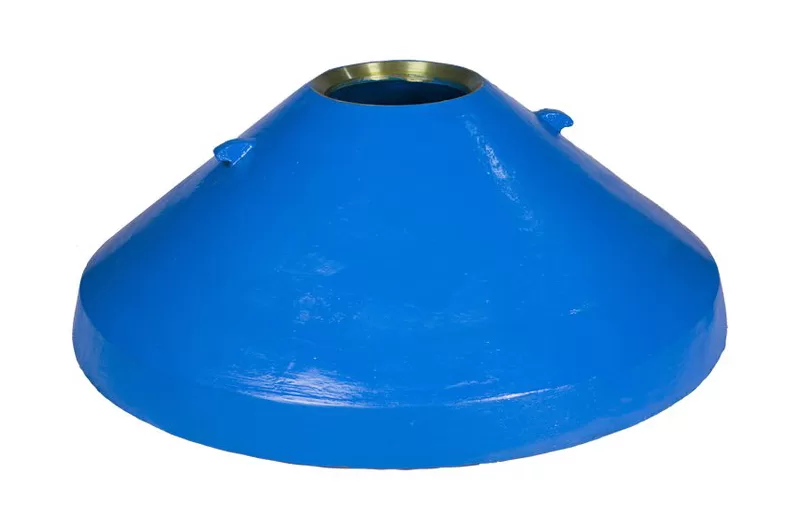
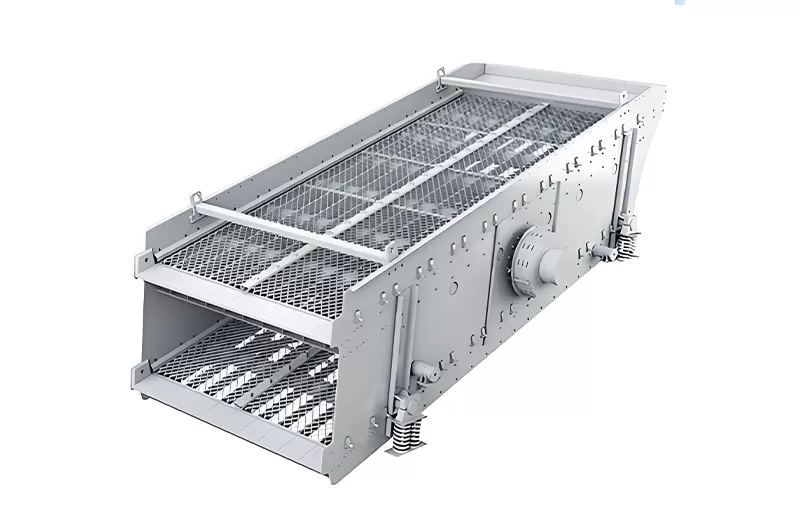
Saving money on wear parts is smart. Here are some high tricks:
A “perfect” copper ore crushing process is designed for two main things: high production and making the right kind of product for flotation. It must take the raw ore and prepare it well for grinding (Ball Mill) and then Flotation Machines. It should produce a lot of crushed ore. It should also make as little fine dust (slimes) as possible. Too much fine dust hurts flotation. The design must handle the ore’s properties.
A smart process usually starts with a heavy-duty feeder (Vibration Feeder). This controls the flow of big rocks from the mine. The rock goes into a primary crusher (Jaw Crusher). After the Jaw Crusher, the material goes to a screen (Vibrating Screen). The screen takes out the pieces that are already small enough. This is very important. It stops small pieces from going into the next crusher. This saves energy. It reduces wear on the secondary crusher (Cone Crusher). It also helps reduce the making of fine dust. The larger pieces go to the secondary crusher. You might have another screen and a tertiary crusher (Cone Crusher) to get the final size needed for grinding. Good conveyors move the material between machines. Screens at each step are key. They make sure only rock that is too big is crushed again. This is called a closed circuit. It makes the process very efficient. It helps control the final particle size distribution. This is important for flotation success.
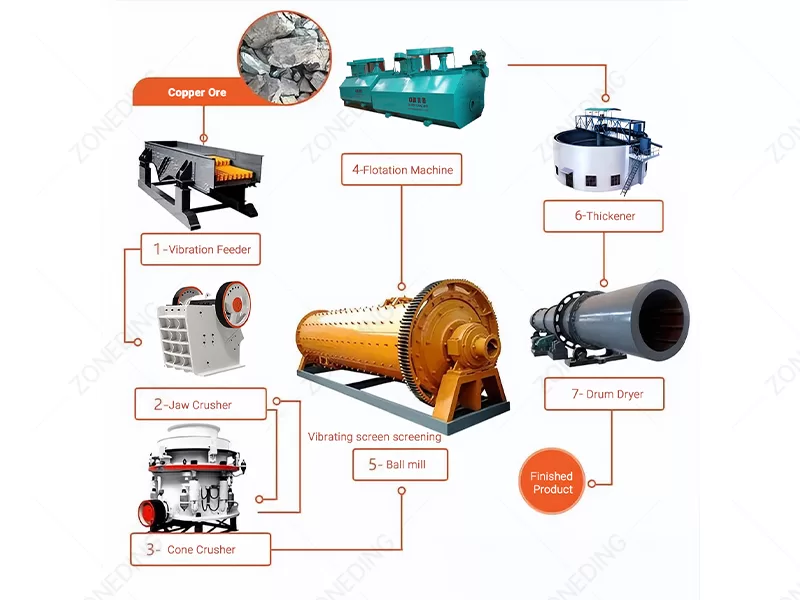
Here is what a good process flow looks like:
The size of the crushed copper ore is extremely important. It is the link between crushing and the cleaning process, which is usually flotation for copper sulfide ores. Flotation works by using bubbles to lift copper minerals from the waste rock in water. This process works best within a specific particle size range. If the crushed ore particles are too big, the copper minerals are still locked inside the waste rock. The flotation bubbles cannot attach well to combined particles. You cannot separate the copper. You lose copper in the waste.
If the crushed ore particles are too small, especially if you make too much fine dust (called slimes), it causes big problems for flotation. Fine particles are hard for bubbles to pick up. They can also make the water dirty. This makes the flotation chemicals not work as well. Fine waste particles can stick to copper bubbles. This lowers the purity (grade) of your copper concentrate. The goal of the crushing plant is to produce ore that is crushed to the perfect size range. You need to break the rock enough to free the copper minerals from the waste rock. But you must avoid making too much fine dust. You achieve this by using the right crushers (Jaw Crusher, Cone Crusher) and screens (Vibrating Screen). You must set up these machines precisely. This makes sure the material going to the grinding mill has the ideal size distribution. The grinding mill will then make the final fine particles for the Flotation Machines. Starting with the right crush product helps the whole process.
Getting the size right is key for good flotation results.
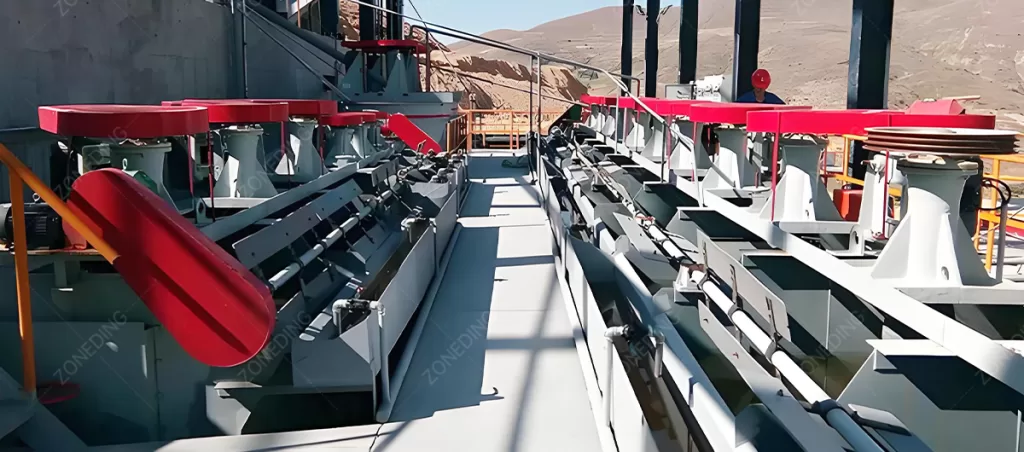
Getting the size right is key for good flotation results.
Some copper ores contain clay or are wet. This makes them sticky. Sticky ore does not flow smoothly. It can stick to the insides of machines. It can build up in chutes and crusher openings. This causes blockages. A blockage stops the flow of material through the crushing plant. The plant stops producing. This costs money because of lost production time. Blockages can also be dangerous to clear. You need to design and operate the plant to prevent these “intestinal blockages.”
Preventing blockages starts with the design. Equipment and plant layout matter a lot. Chutes that carry material between machines should be steep. Their surfaces should be smooth. This helps sticky material slide down. Crusher openings and cavities (Jaw Crusher, Cone Crusher) should be designed to handle sticky material without building up. Good feeders (Vibration Feeder) are very important. They control how much material enters the crusher. This stops the crusher from getting too full. Using screens (Vibrating Screen) designed for wet or sticky material helps too. Some screens use special decks or heating to prevent blinding (holes getting blocked). Regular cleaning of build-up in chutes and hoppers is also necessary.
When you invest in a copper ore crushing plant, the cost of the machines is a big part. But it is not the only cost. There are many ongoing costs to run the plant every day and month. Electricity or fuel use is a major cost. Breaking hard copper ore uses a lot of power. Wear parts cost a lot because copper ore can be abrasive. You pay workers to run and maintain the plant. Maintenance costs include fixing broken machines and doing planned checks to prevent problems. If the plant stops unexpectedly, you lose money because you are not making crushed ore.
To make money from your copper mine, you need to look at the total cost to produce one ton of crushed ore. This includes all your operating costs plus a part of your initial investment. To lower this cost per ton, you need to be efficient. You must lower wear costs. This means buying good wear parts and running your machines correctly. You must reduce energy costs. This means using efficient machines and designing a process that uses energy well. Preventing breakdowns is also key. Stopping unexpected stops saves money on repairs and avoids lost production. Good planning and how you run the plant are very important. You also have costs for things like dust control, water, and environmental permits. Sometimes preparing the land and building the plant’s structures cost a lot too. When you think about buying equipment, always consider these costs over the long term. A cheaper machine that breaks down often or uses lots of power can cost you more in the end.
An investment in a Copper Ore Crushing Plant is more than just the equipment price. You need to see the whole picture.
Mobile crushing plants are built on wheels or tracks. They can move from one place to another. For copper ore projects, mobile crushers can be very useful in some cases. If your copper deposit is not in one big area, or if you move your mining work often, a mobile crusher can move with you. This saves you money on hauling raw ore from the mine to the crusher. Hauling raw ore is expensive. Cutting this distance saves money.
Mobile crushers can be primary crushers (Mobile Jaw Crusher) or secondary/tertiary crushers (Mobile Cone Crusher). They are good for projects that need to start production quickly. They are also good for temporary projects. They can be much faster to set up than building a large, fixed plant on concrete foundations. However, mobile plants often have a lower total production capacity compared to large fixed plants. They might also have higher operating costs per ton if they use diesel engines for power instead of cheaper grid electricity. So, they are not right for every copper project. For a very large, long-term mine, a fixed plant is usually the best choice for high capacity and low operating cost. But for smaller mines, mines that move, or projects needing fast setup, a mobile solution can be a great advantage.
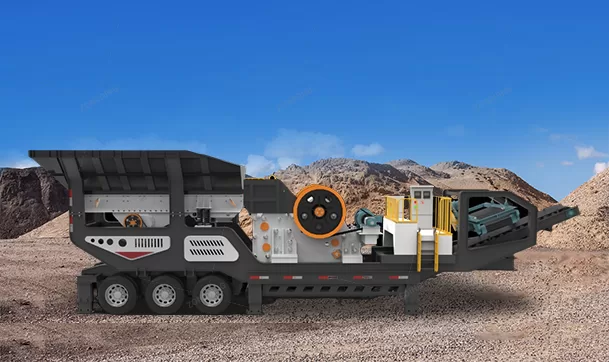
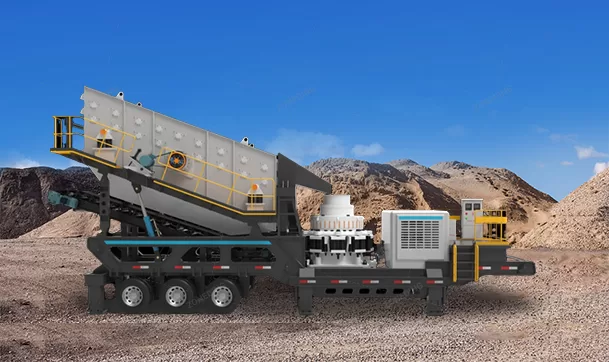
Think carefully about your project before you choose.
Choosing the right company to supply your Copper Ore Crushing Plant is very important for your project’s success. Copper ore has its own special properties. It can be hard, abrasive, or sticky. You need a supplier who knows these challenges well. They should have done projects before where they designed and built crushing plants for copper ore. An experienced supplier knows which machines, sizes, and setups work best for different types of copper ore. They know how to design the process flow to get good mineral liberation. They know how to keep fines low. This prepares the ore perfectly for your flotation process. They can also recommend the best wear part materials to save you money on costs.
Look for a supplier who has been in the mineral processing business for a long time. Ask them about their past copper ore projects. They should have engineers who are experts. These engineers should want to see and test your specific copper ore. They should use this information to design a crushing solution just for your ore and your flotation plant’s needs (Flotation Machine). A good supplier gives you more than just machines. They give you full support. This includes helping design the plant, making the equipment, helping put it together at your site, training your workers, and providing ongoing technical help and spare parts. Copper ore processing is complex. You need a partner with proven knowledge and reliable equipment. ZONEDING has many years of experience. We have designed and provided mineral processing plants, including crushing plants, for various ores, including copper ore, in over 120 countries. Our engineers are experts in different ore types. We can help you design a plant that processes your copper ore efficiently. This will help you get more copper using your Flotation Machines and lower your costs.
Q 1: Why is crushing important before copper ore flotation?
A: Crushing breaks the ore to free copper minerals from waste rock, preparing it for grinding and then flotation to separate the valuable copper.
Q 2: How does ore stickiness affect the crushing plant?
A: Sticky ore can build up in machines and chutes, causing blockages that stop the plant and cost production time and money.
Q 3: Which crushers are commonly used for copper ore?
A: Heavy-duty Jaw Crushers for primary crushing and Cone Crushers for secondary and tertiary stages are main players.
Q 4: How can I reduce the cost of wear parts?
A: Use high-quality wear parts made for abrasive ore, feed your crushers steadily (Vibration Feeder), and maintain your machines well.
Q 5: Does the size of crushed ore matter for flotation?
A: Yes, very much. Crushed ore size must be right for the grinding process (Ball Mill), which makes the final size needed for good copper recovery in flotation (Flotation Machine).